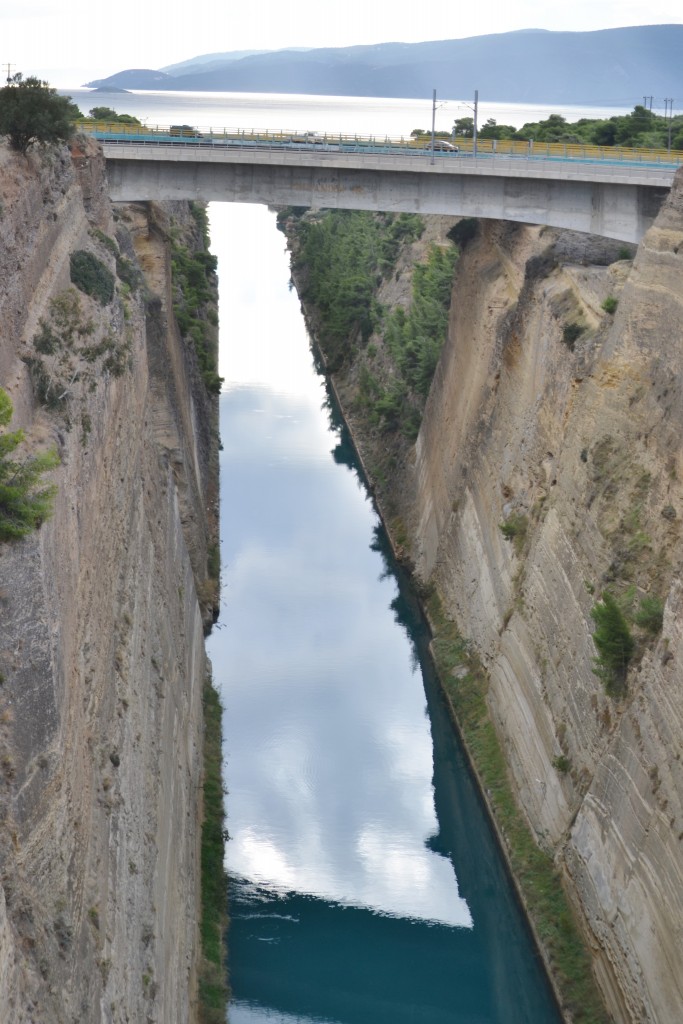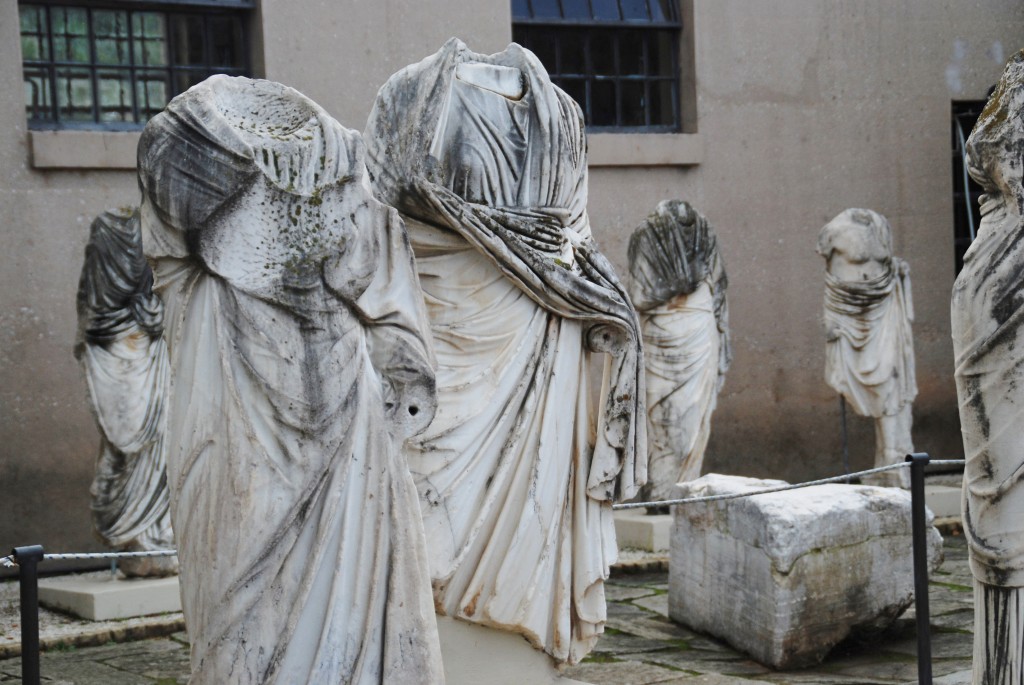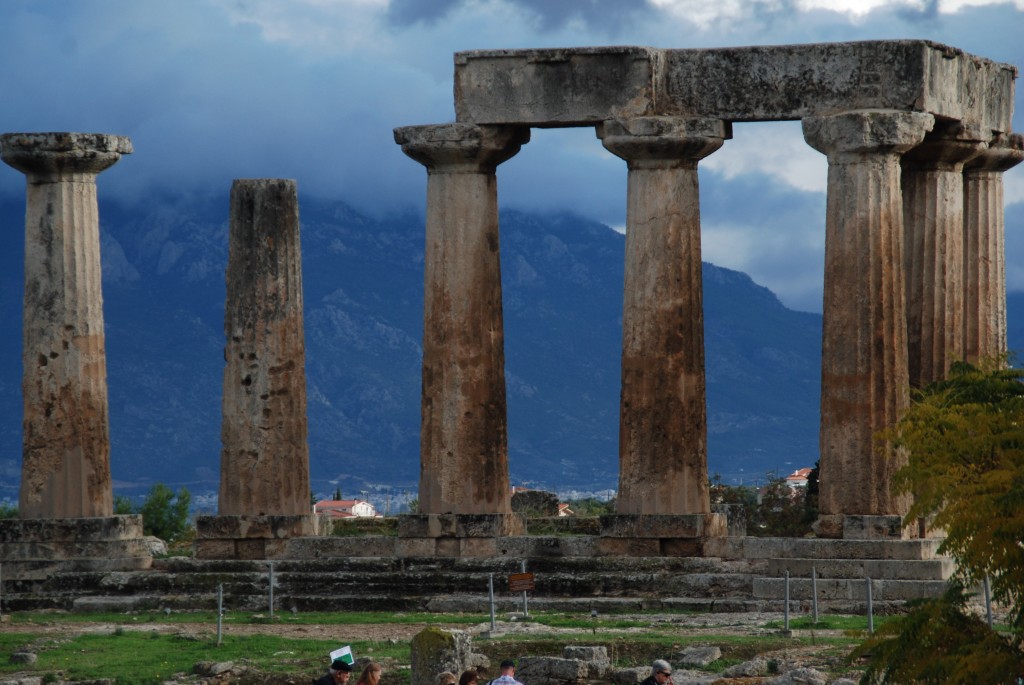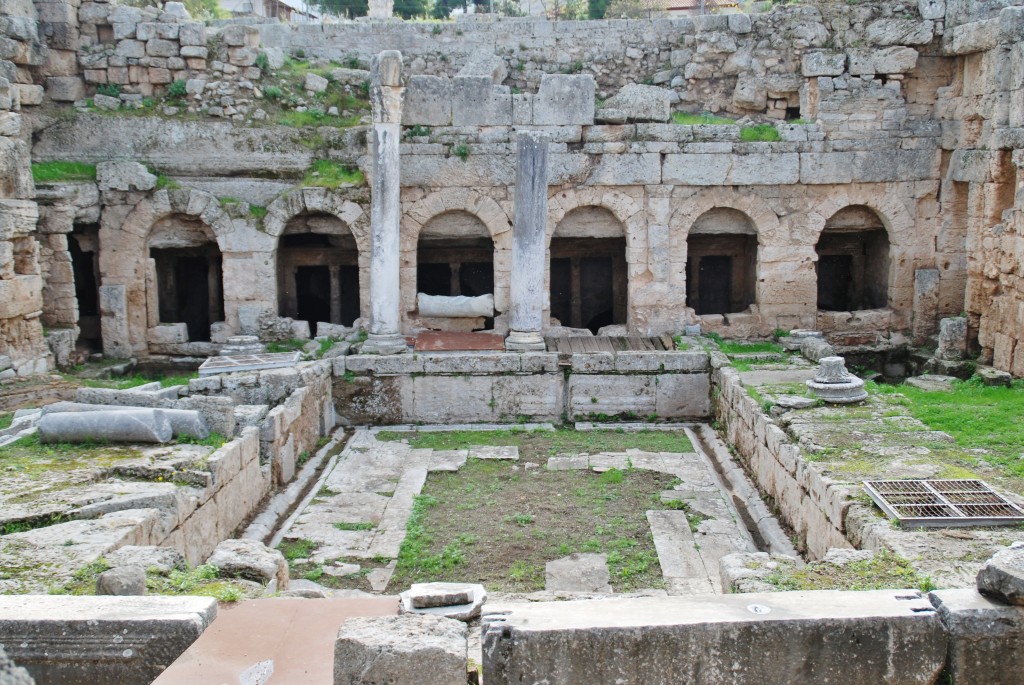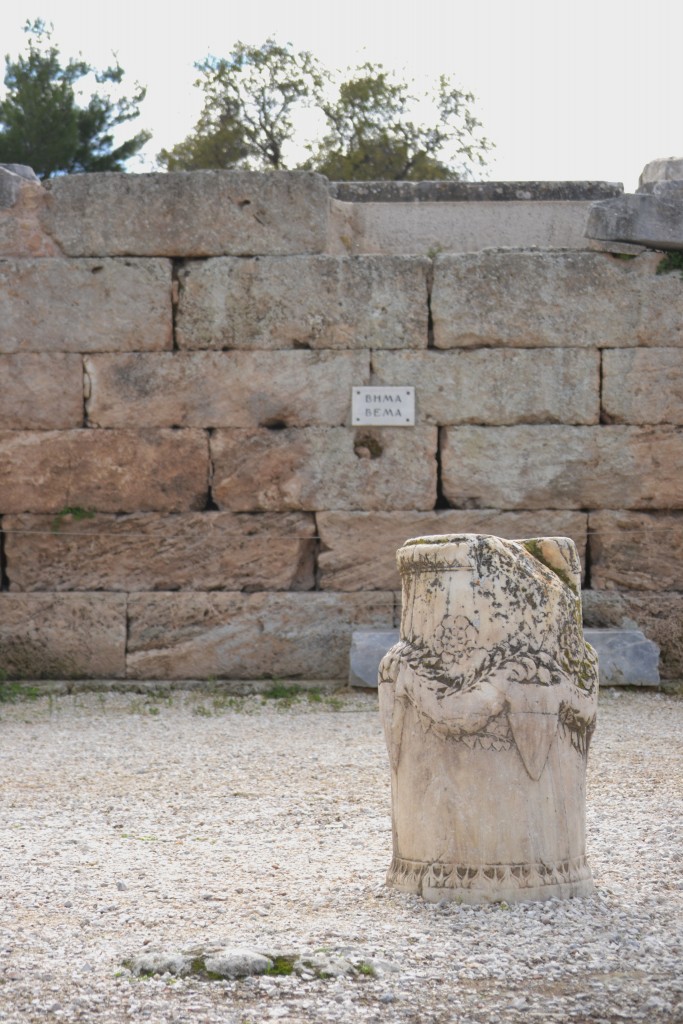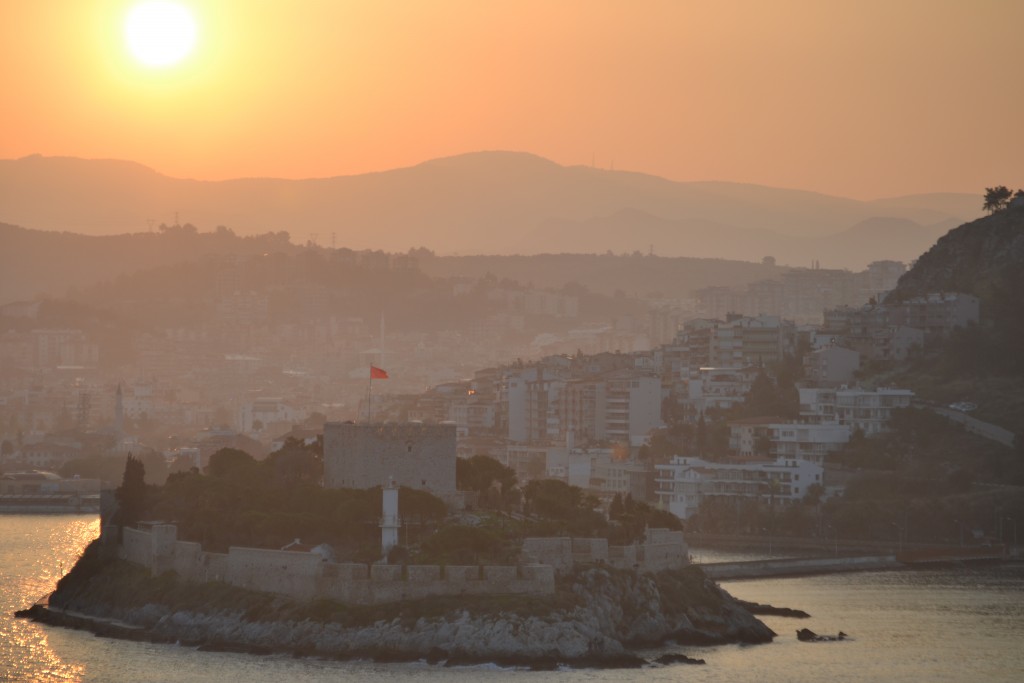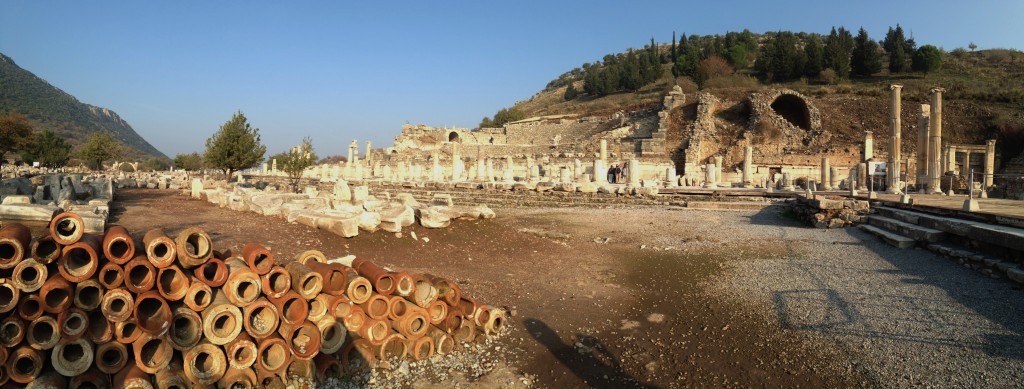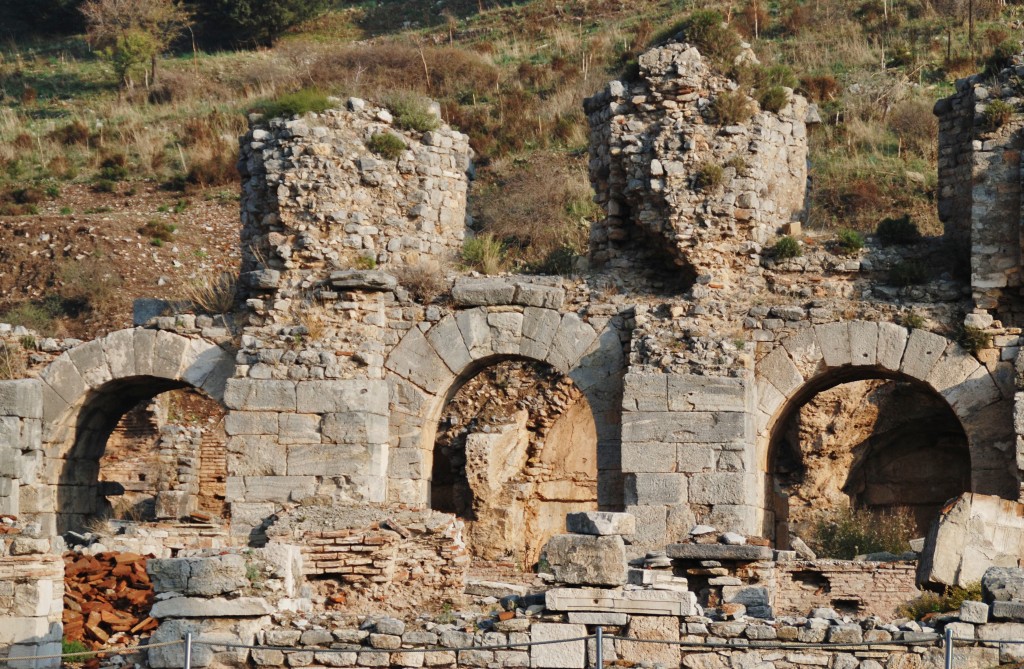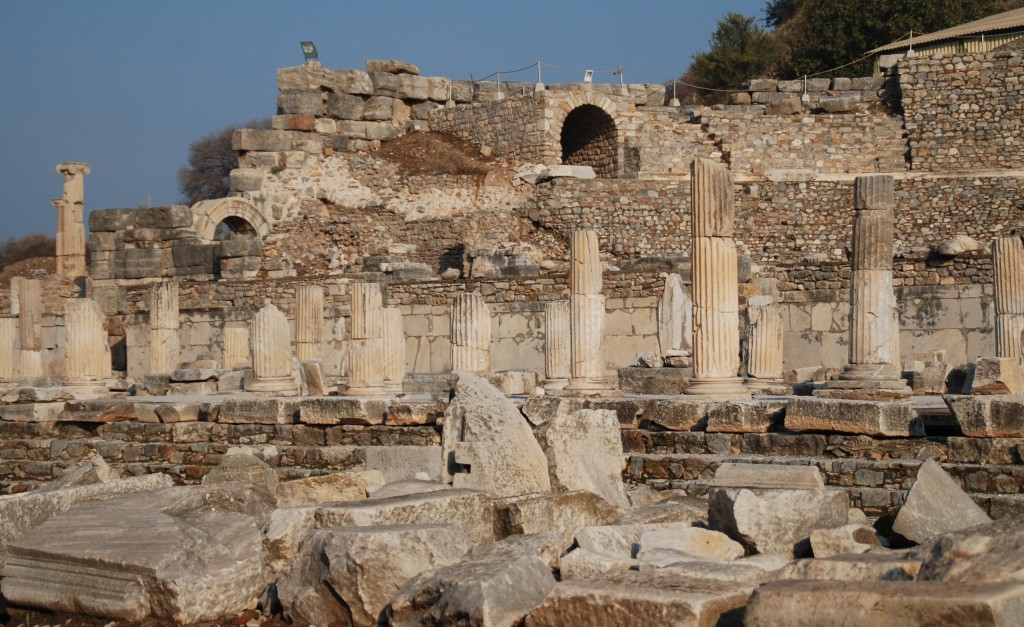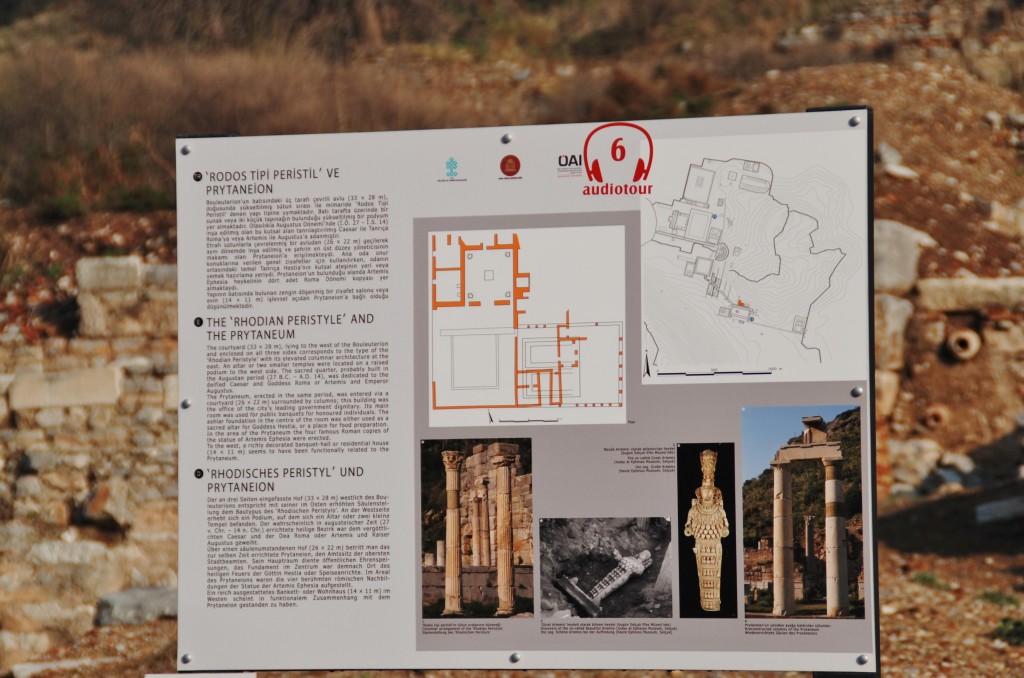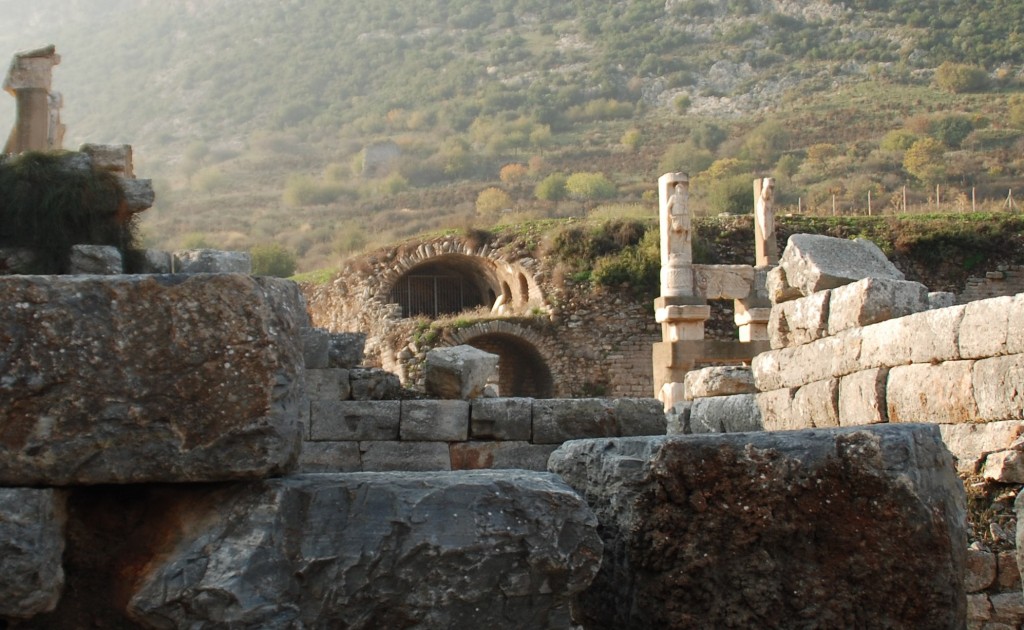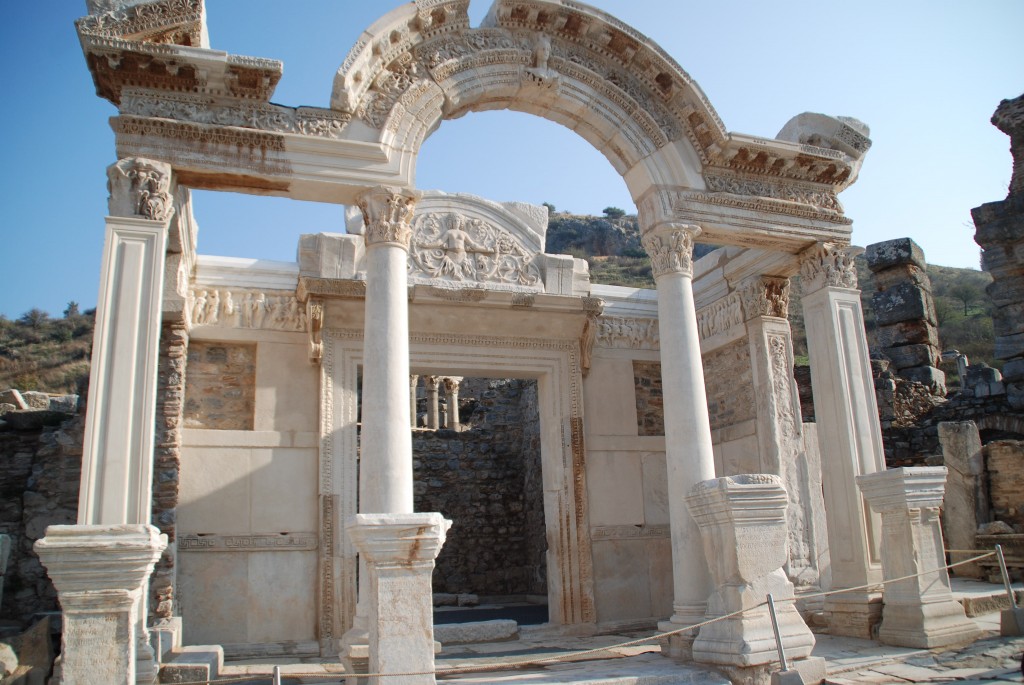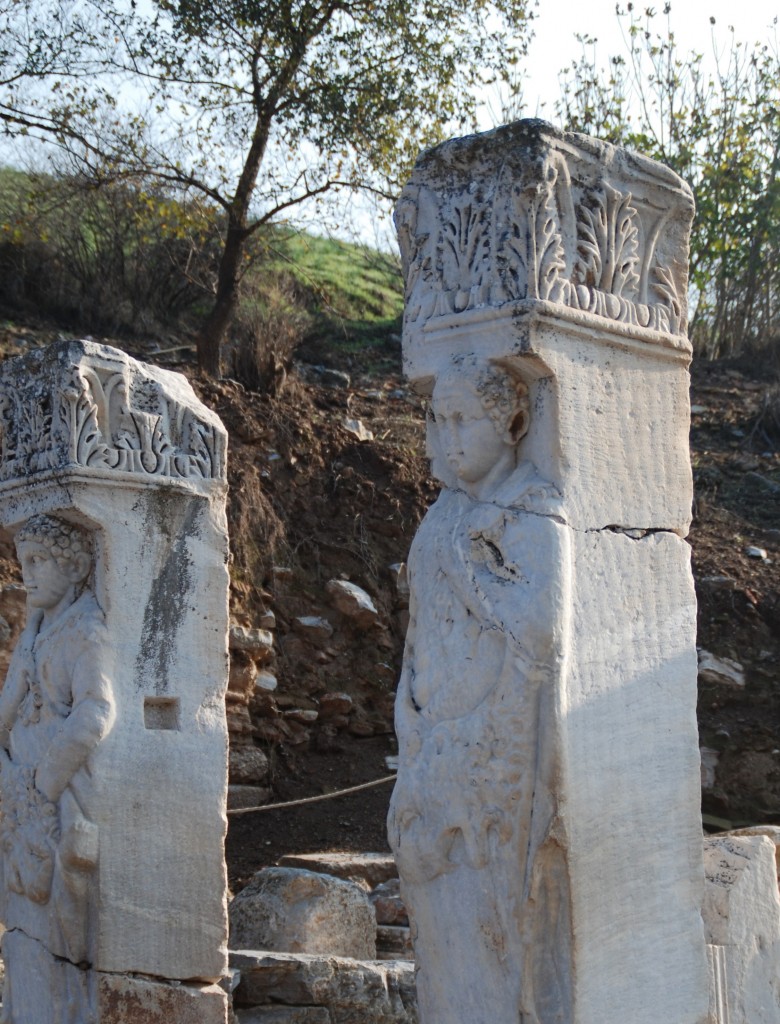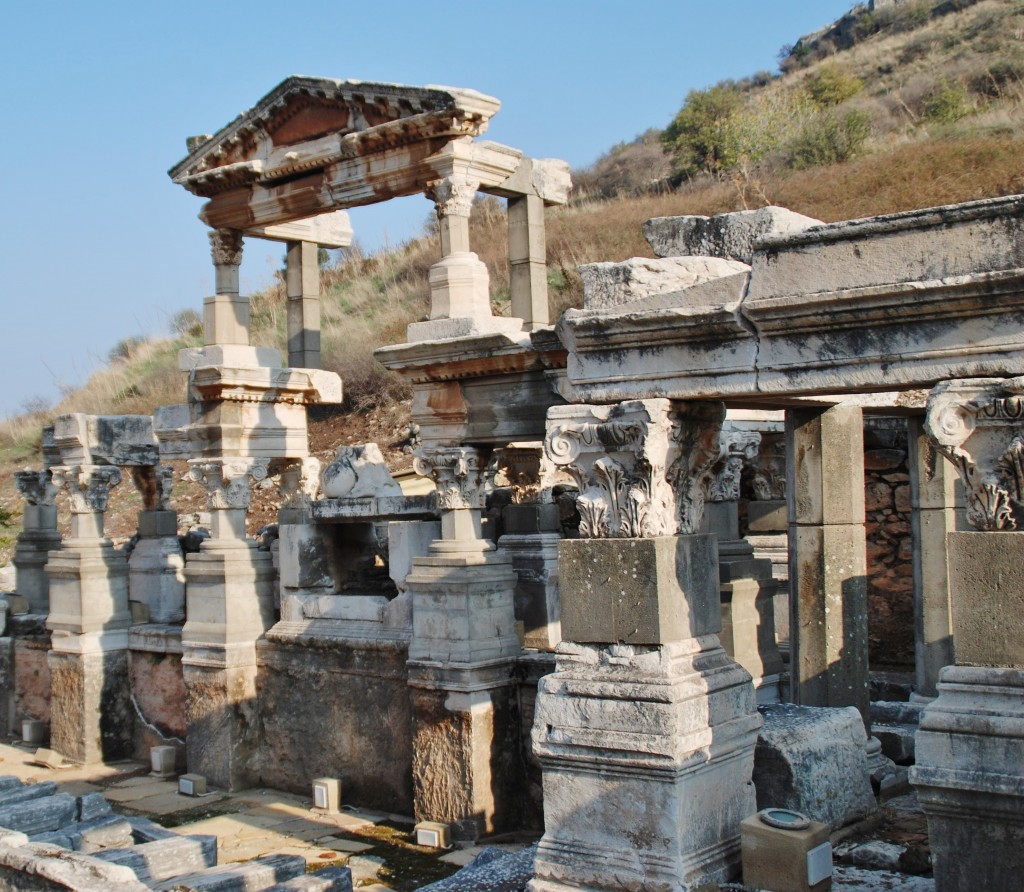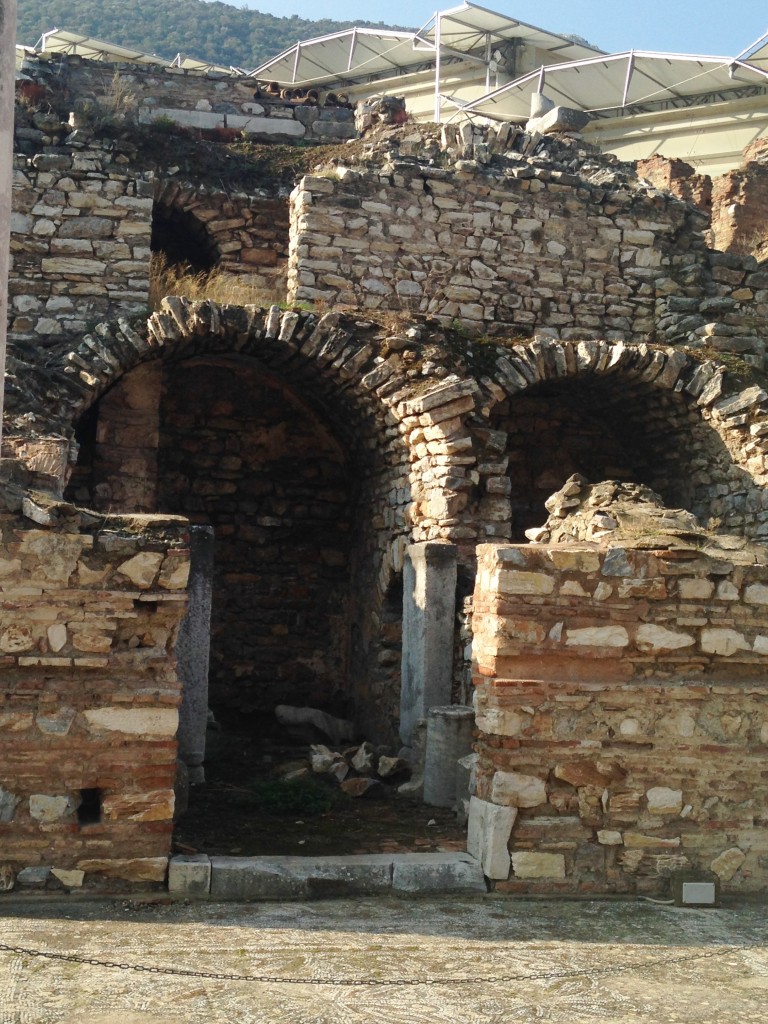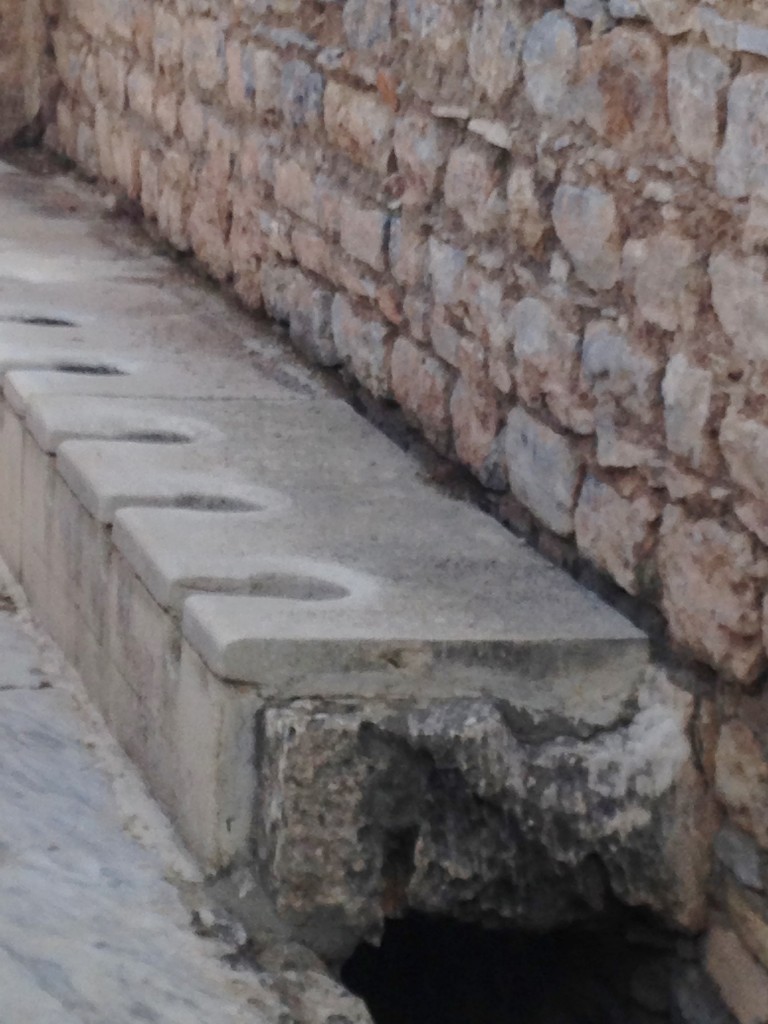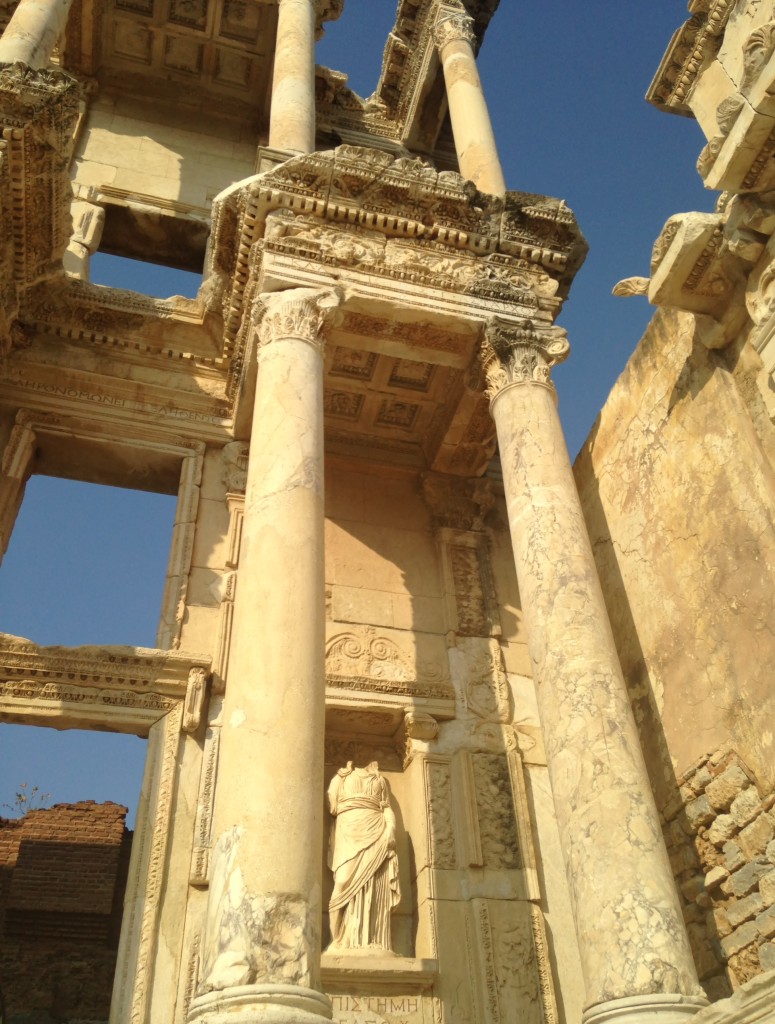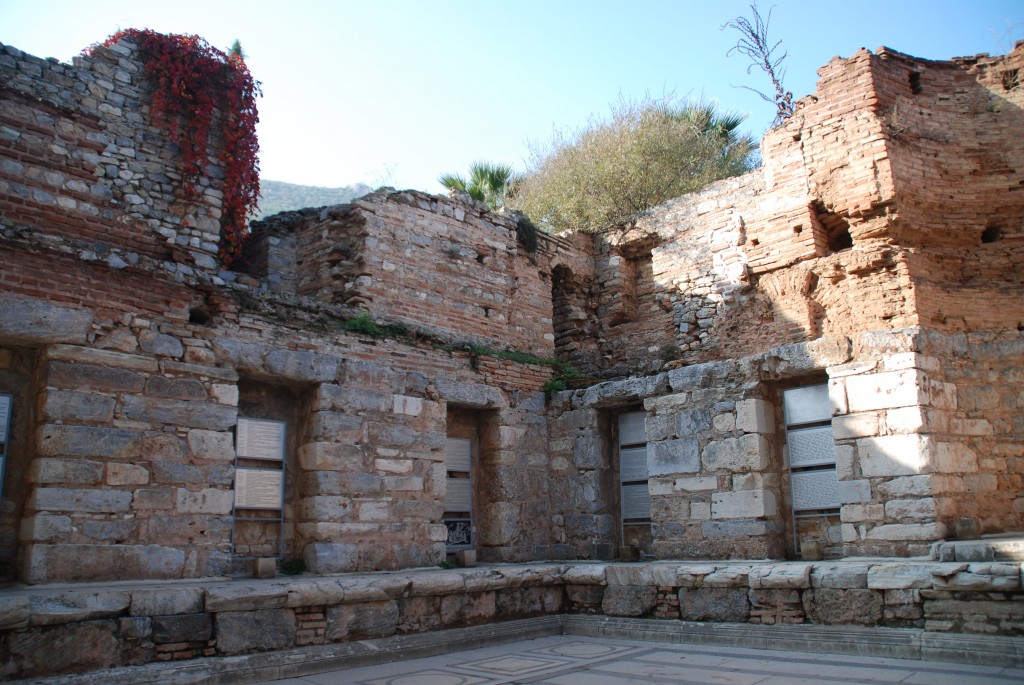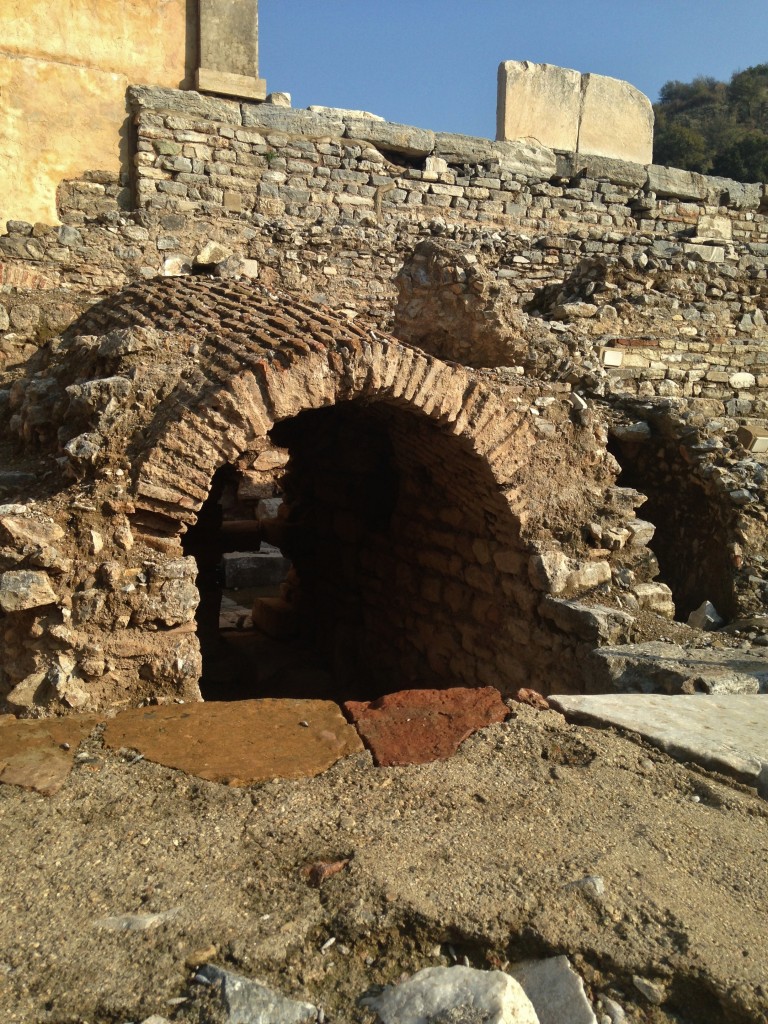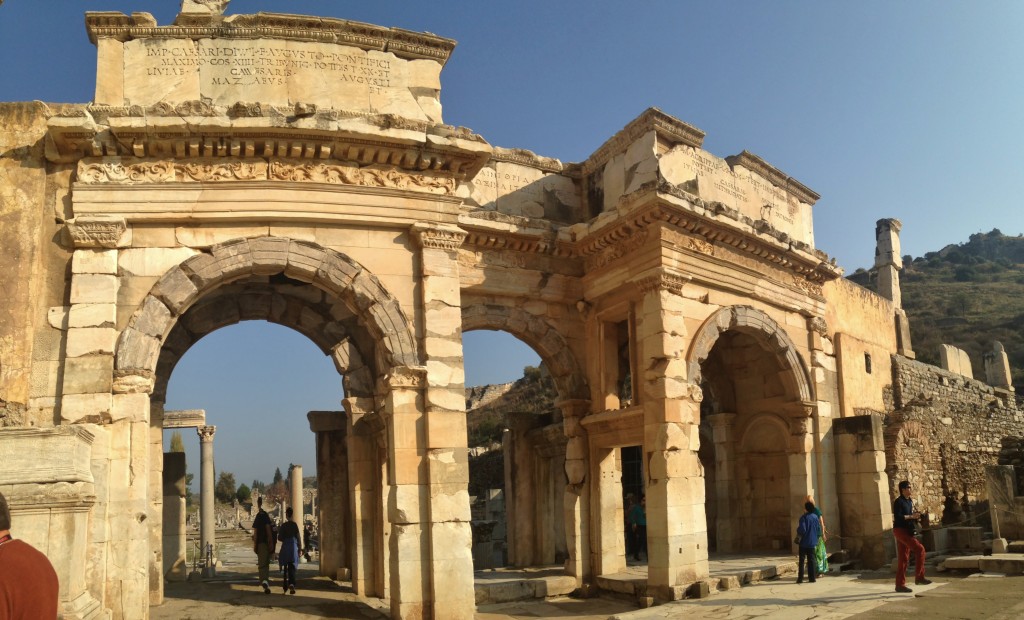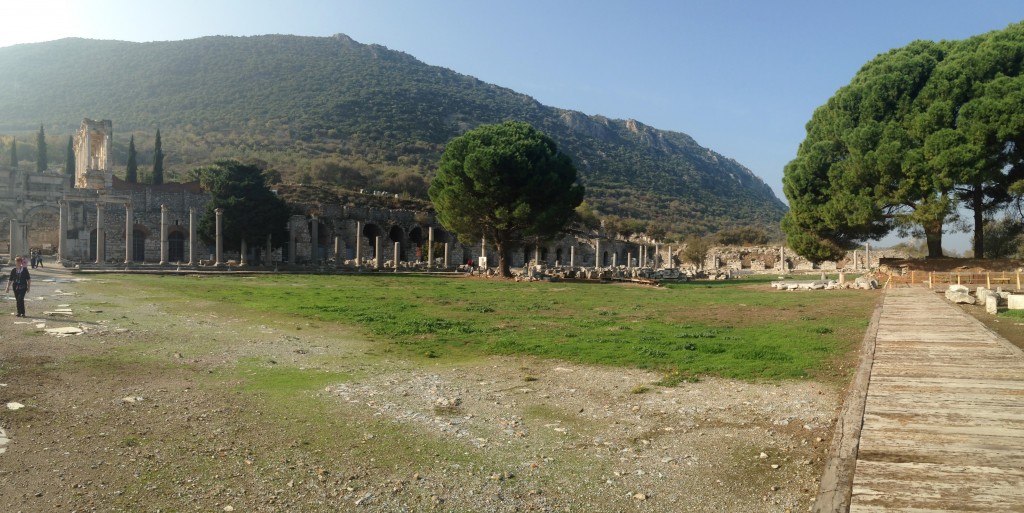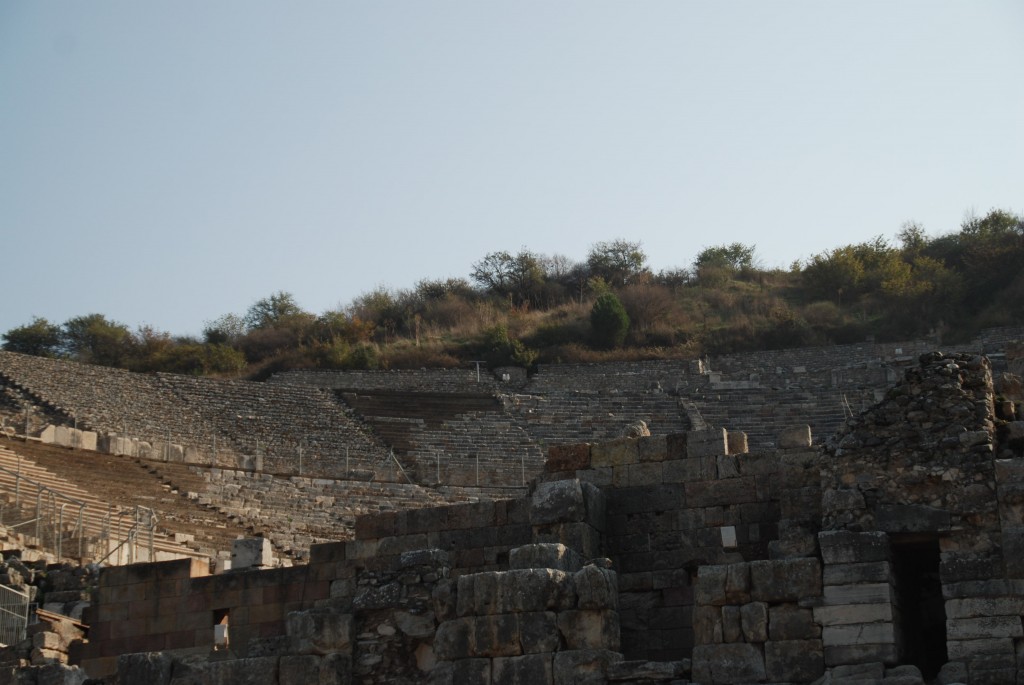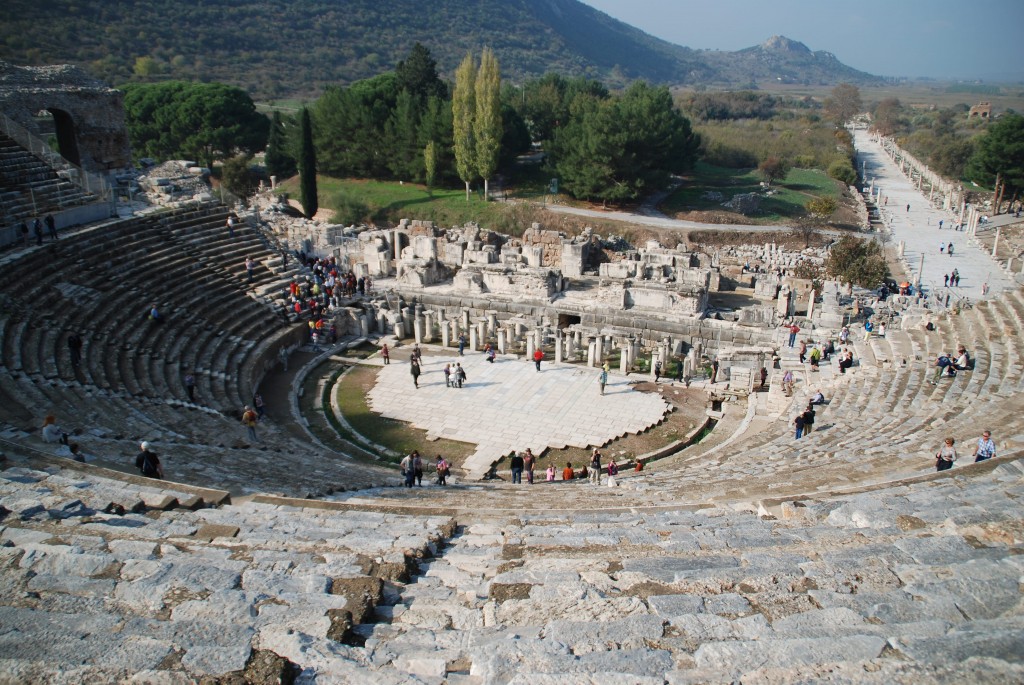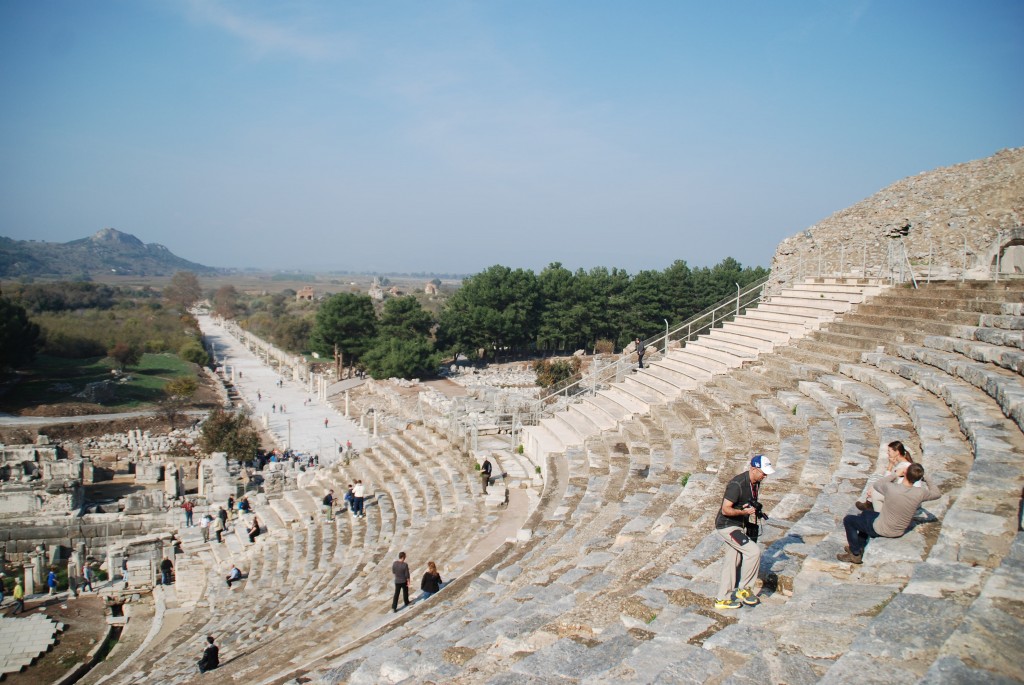The mainland in Greece holds such contrast to its beautiful Mediterranean islands and sailboats in the harbor. When I learned that our cruise itinerary included an excursion to Corinth, I was not certain what to expect. I only knew that this city was significant to Christians as a stop on St. Paul’s missionary tour and that a canal was built to connect the Gulf of Corinth to the Saronic Gulf as a major trade route.
Ancient Corinth is little over an hour bus ride west of Athens and our first stop was at the Corinth Canal. We had the opportunity to cross the bridge to marvel at this engineering phenomenon which took decades to complete. Visitors can cross over one of two bridges to take a closer look at the depth and length of the passageway. At its deepest, it measures 26 feet. Carved through solid rock, this sensational man-made canal became a major trade route for Greece after its completion.
Once we had finished our stop at the Corinth Canal, we had a few moments to explore the nearby shop before boarding the bus for a trip to the ruins of Ancient Corinth.
Spread out, and found undisturbed in the middle of nowhere, we arrived at the archaeological site and museum of Ancient Corinth. The location was surrounded by fields and hills, where a small Greek Orthodox Church provided solace to a sheep herder with his flock making their way to the next pasture.
The Ancient Corinth Museum was a short walk from the ancient ruins. The structure houses many of the archaeological artifacts including sculptures and engravings that were found at the site. It was here where the tour began as our friendly guide proudly discussed the relics and treasures that were discovered during the excavation. We noticed that there were quite a few headless statues located in the open air courtyard and learned that instead of making new statues, it was easier to replace the heads to include the likeness of the new rulers. 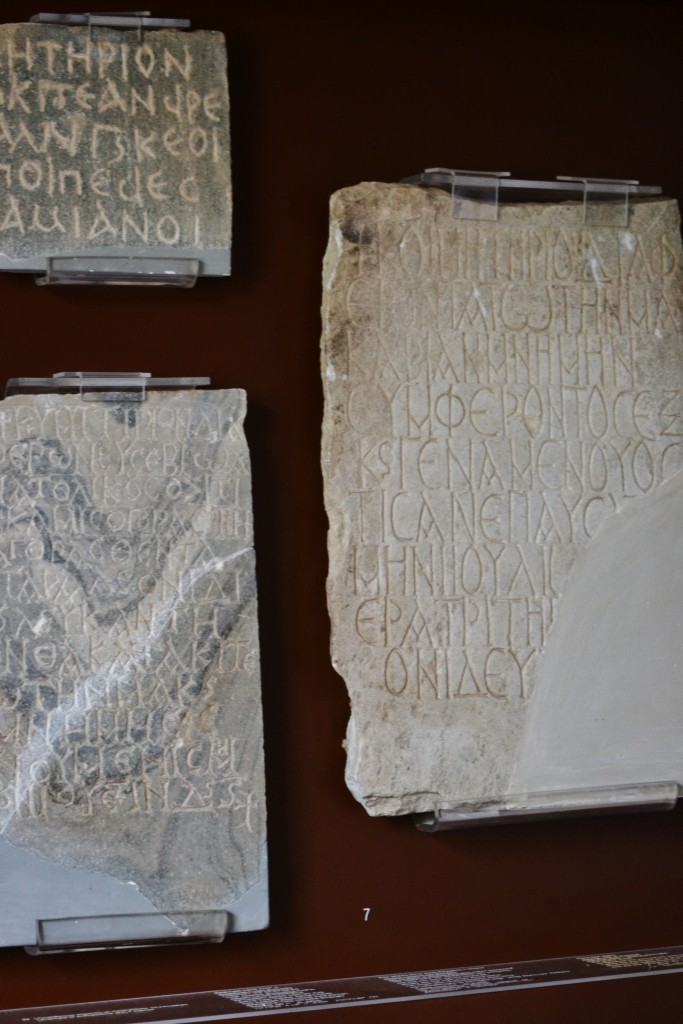
Samples of ancient Greek writing was also uncovered during the dig and they were beautifully displayed at the museum. I admired the elegance of the language in script and our guide read each of them carefully. The tablets appeared similar to today’s English language, but yet so different, especially in the way it had sound.
After a visit to the museum, we were led outside to explore the historical site of Ancient Corinth. The Temple of Apollo stood forefront over this site which once rivaled the city of Athens in both wealth and power. The Doric columns stood tall and mighty as a layer of clouds rolled in over this magnificent place. Built by the Greeks in 550 BC, only seven of its thirty-eight columns remain.
Within a short walk from the temple, the Roman Market was one of the most impressive sites of the ruins. Stalls that had once been concealed, showed the layout and structure of this large shopping plaza, the center of socialization in Corinth. In the courtyard there was once an ancient Roman fountain, known as the Fountain of Pirene, which was said to be the favorite watering-hole of Pegasus, a mythical horse with wings.
Additional structures that have been excavated and identified to date include the Propyla A as well as the Periblos of Apollo and the Bema. The Bema refers to the raised platform where a Roman magistrate or ruler sat to make decisions and pass sentence. Biblical reference to the Bema in Corinth can be found in the book of Acts where Paul was brought before Gallio, the proconsul, by local Jews. The offense was that Paul was “persuading the people to worship God in ways contrary to the law”. When Gallio refused to settle the matter, the Jews turned on the synagogue leader and beat him in front of the court. It would have been at this location where the beating took place.
A view of Akrokorinthos/Acrocorinth can be seen from the ruins of Ancient Corinth below. This town, translated as “Upper Corinth” is approximately a 30 minute drive with splendid views of the surrounding area. We were unable to visit this location, but learned that the views from here are spectacular.
The ancient site at Corinth continues on with its excavation and identification of archaeological ruins that have yet to be labeled or discovered. There still remains much work to be done on the site as a large portion of the city remains concealed beneath the countryside. It endures today as a strong spiritual and historical influence that draws thousands of visitors to this area each year. I can only imagine that with the unceasing work of researchers and archaeologists how their future progress will impact the history and findings of Ancient Corinth as we know it today.
Have you had the opportunity to explore archaeological sites that have made an impact on history? I would love to hear about your experience if you would kindly leave a message in the comments section below. Many thanks for reading about my visit to historic Corinth! Wishing you many Happy Travels!
What to See and What to Do:
Ancient Corinth
Archea Korinthos
200 07, Greece
Telephone: +30 2741 031207
- Hours: Daily from 8AM to 7PM
- Amenities: shop and limited snacks
- Scenic View: Beautiful views of AcroCorinth above.
- Length of Visit: 1 – 2 hours
- Tips for Your Visit: Arrive early in the day as there is no protection from the sun. In addition bring bottled water and snacks as food is limited at the museum. Wear comfortable shoes for walking.
Where to Stay:
Apollonio
Sisifou 2, Ancient Corinth,
Peloponnese, Greece 20007
Telephone: +30 694 941 2888
Where to Eat:
Marinos Restaurant
Ancient Corinth,
Peloponnese, Greece, 20007
Telephone: +30 27410 31 130
What to Eat:
-
-
- Baklava: made with puffed pastry, this dessert has chopped nuts (my favorite is pistachio), and is covered in honey.
- Choriatiki: Greek salad
- Dolmadakia/Dolmades: stuffed grape leaves
- Ellinikos: Greek coffee
- Gyros
- Kataifi: similar to baklava, but rolled
- Moussaka: Greek’s answer to lasagna
- Pastitsio: pasta made with noodles, ground beef and a bechamel sauce
- Retsina Wine: has been made over 2000 years
- Souvlaki: meat on a skewer
- Spanikopita: pastry filled with spinach and cheese
- Tzatziki: a Greek sauce made with yogurt, garlic, olive oil and fresh dill
-
What to Read:
- Ancient Corinth Site Guide, by Various Writers
- Cure and Cult in Ancient Corinth by Mabel Lang
- Demeter and Persephone in Ancient Corinth, by Ronald S. Stroud
Santorini: Life on a Volcano
Mykonos, Greece: Whitewashed and Wild
The Island of Delos: A Lesson in Greek Mythology
Corfu…the Favorite Vacation Destination for an Empress
The Site of Olympia and its Role in the Olympic Games
The Archaeological Museum at Olympia
Athens, Greece: A Living Museum
